Hey folks, Jeff Linfert from Linfert Performance/Buras Motorsports here once again as a guest blogger. If you missed my first blog, we are a Megasquirt reseller, installer, and tuning shop in East Central Florida. Most of our customers road race, own Miatas or both but we will take on most anything. My partner Todd Buras is the driver, and I am the crew chief.
Today we are going to talk about MegaSquirt and PDMs. At Linfert Performance/Buras Motorsports we have been using AIM PDMs with MegaSquirt ECUs to do complete nose to tail rewiring of road-racing cars that integrates power, data and engine management for almost two years. And with great success I might add.
So what is a PDM?
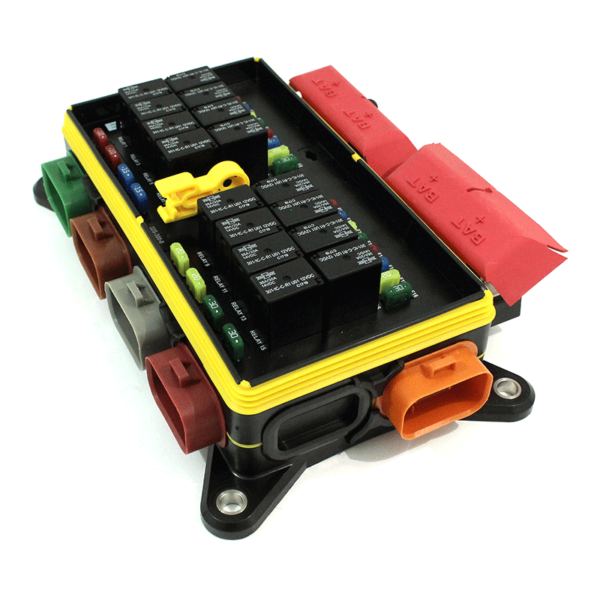
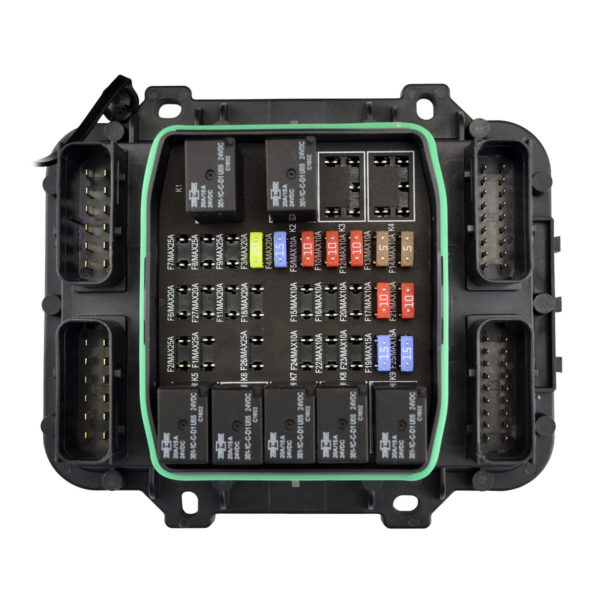
PDM stands for Power Distribution Module. It may also be called a PMU or PDU And basically they come in two styles. First is Analog: An analog PDM still uses fuses and relays, but typically has 1 or more multi-pin connectors for inputs and outputs instead of a bunch of wires hanging out of the back like a conventional fuse and relay box.
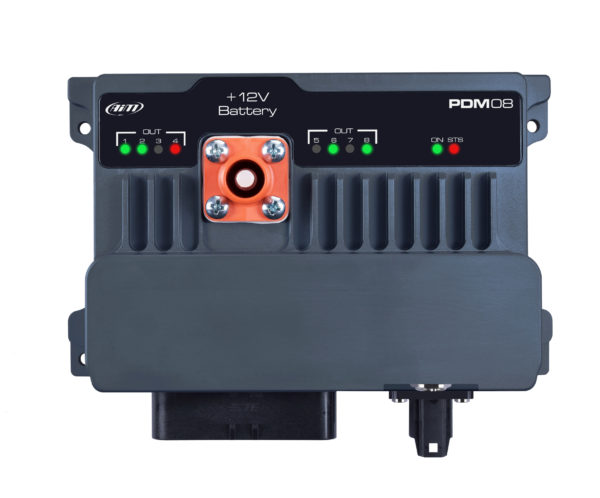
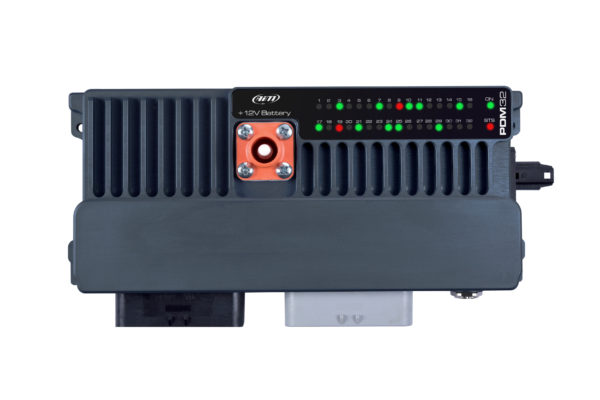
Then there’s Digital: A digital PDM is basically a programmable solid-state fuse and relay box. Some may even have inputs for sensors and a dash to display data. A digital PDM may also have 1 or more CAN Busses to transfer data to and from other devices like ECUs, ABS controllers, Wideband O2 controllers, Video Cameras, GPS modules and even programmable multi button keypads. A digital PDM can often let you monitor circuit current and or voltage.
From here on out the focus will be on digital PDMs. So why would you want to use a PDM with your MegaSquirt ECU? I mean “Oh BOY!” more wiring to run and more software to figure out and learn. Just what we wanted to do right? Well actually, yeah, it’s worth the effort. As far as the wiring goes, you actually use fewer wires with a digital PDM. Here’s a quick list of some of the benefits of using a digital PDM over an analog unit or a conventional fuse and relay box.
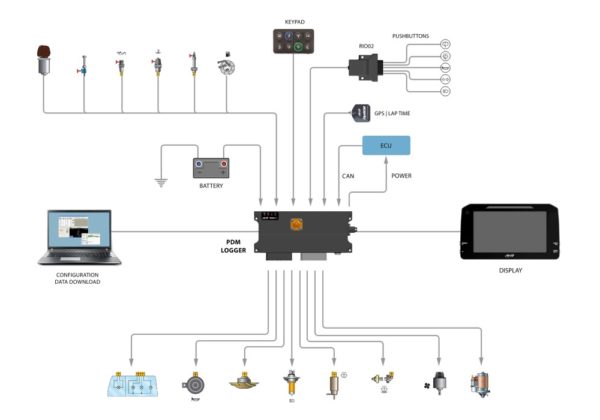
Fewer wires:
With CAN communication and programmable outputs, you don’t need nearly as much wiring. Example: a single button on a CAN based keypad can turn on as many power outputs as you want or need. On our installations we typically have an “Ignition” button that turns on power to the ECU, injectors, coils, wideband controller(s), and anything else that the ECU controls or uses and needs 12V like idle valves, VVT, and boost control solenoids.
Improved diagnostics and troubleshooting:
The ability to monitor each output’s actual power usage can be a Godsend. Many systems even allow you to log the power use of individual channels. Example: We were testing our endurance racecar for the first time after installing an AIM PDM 32 along with an MS3 Pro EVO. The engine was breaking up in right hand turns. Ok, fuel issue (the MS datalogs showed lean AFRs and no sync loss). We were using a dual pump system with a surge tank. So, I connected the laptop to the PDM and looked at the live current draw of the 2 fuel pumps. Surge tank pump, 8 amps. Perfect! In tank transfer pump, 0 amps! Whoops, what up there? Check the power output menu, well darn, the guy who programmed the PDM made a mistake, and the in-tank pump is not turning on!!! Fix the programming mistake and send it to the PDM. Problem solved. Elapsed time under 2 minutes!
Shared Data means fewer sensors:
When everything is connected via CAN you no longer need a coolant sensor (or any other) for the ECU and one for your gauge and CAN has the added bonus of no signal degradation or ground offset issues like conventional analog signals. We use AIM wideband controllers and then send the data to the MS via CAN without having to worry about ground offsets and other bugaboos.
Note taking:
As I start running wires, I build a spreadsheet and record which connector and pin position is being used, wire color, wire size (16Ga, 18Ga etc.…) circuit name and function. It’s invaluable when it comes time to program and debug everything because there WILL be mistakes. I also open up the AIM software and program the basics of the output I am wiring, i.e., name and activation method.
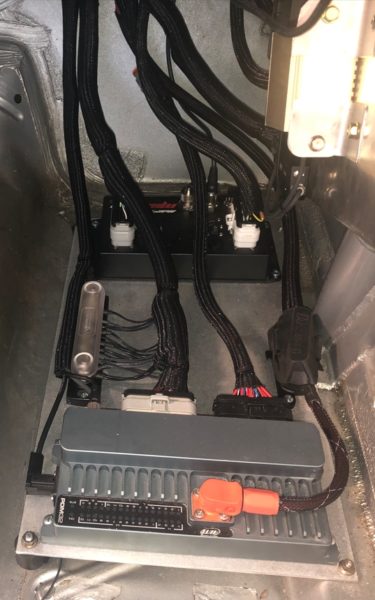
Programmable outputs = more flexibility:
PDMs typically let you activate a power output under multiple or very specific conditions using “AND/OR” logic statements. Here is simple example of how we can turn on the fuel pump with either Engine RPM or a button on the keypad.
“Ok Jeff, this stuff is pretty cool, but how the heck do I set things up and use it?!” In the last 18 months Linfert Performance/Buras Motorsports has installed 9 AIM PDMs as part of complete vehicle rewiring jobs. The 3 keys to a successful job are planning, note taking and using the correct tools. A thorough understanding of DC electricity and wiring helps as well.
Correct tools:
You’re not going to want to hear this but, BUY the factory crimping tool(s) for the PDM connector(s)! Cheap generic crimpers just won’t do. As a happy coincidence, AIM PDMs use the same style Ampseal connectors and pins as MS3 Pro ECUs use so I only had to spend the big bucks once.
Planning:
Before you even touch the car make a list of every single thing you want to send power to. There’s nothing more frustrating than getting near the end of the job and realizing you forgot to provide power to something. It’s also a good idea to note HOW you wish to have the power activate. Consider using a ground bus bar as well.
Why AIM PDMs? What about some of the other ones like Hardwire or CWI? We chose AIM for a number of reasons. Initially it was because we have been using AIM dashes loggers and lap timers for years (sending them MegaSquirt data to log and display) and were familiar with the software. We also already had a good working relationship with the AIM tech support staff. The AIM PDMs have a very nice price point and a bigger, better package out of the box than most of the other PDMs out there. As we started to use the PDM we discovered that it was an excellent choice. AIM and MegaSquirt play nice with each other, especially when it comes to CAN communication. The MegaSquirt CAN documentation and Tuner Studio support are fantastic, and AIM has a CAN protocol builder that allows you to make a custom CAN stream fairly quickly and pretty easily, especially if you watch the AIM webinar first. Speaking of AIM webinars, my business partner Todd Buras was guest host for one about the PDM from a user perspective. Which can be found HERE. (Yes, we were using a different business name last year).
So, there you have it. A PDM when used in conjunction with a MegaSquirt ECU can be an extraordinarily powerful tool. Fewer wires, more flexibility, easier troubleshooting, and oh yeah, better safeties as well.